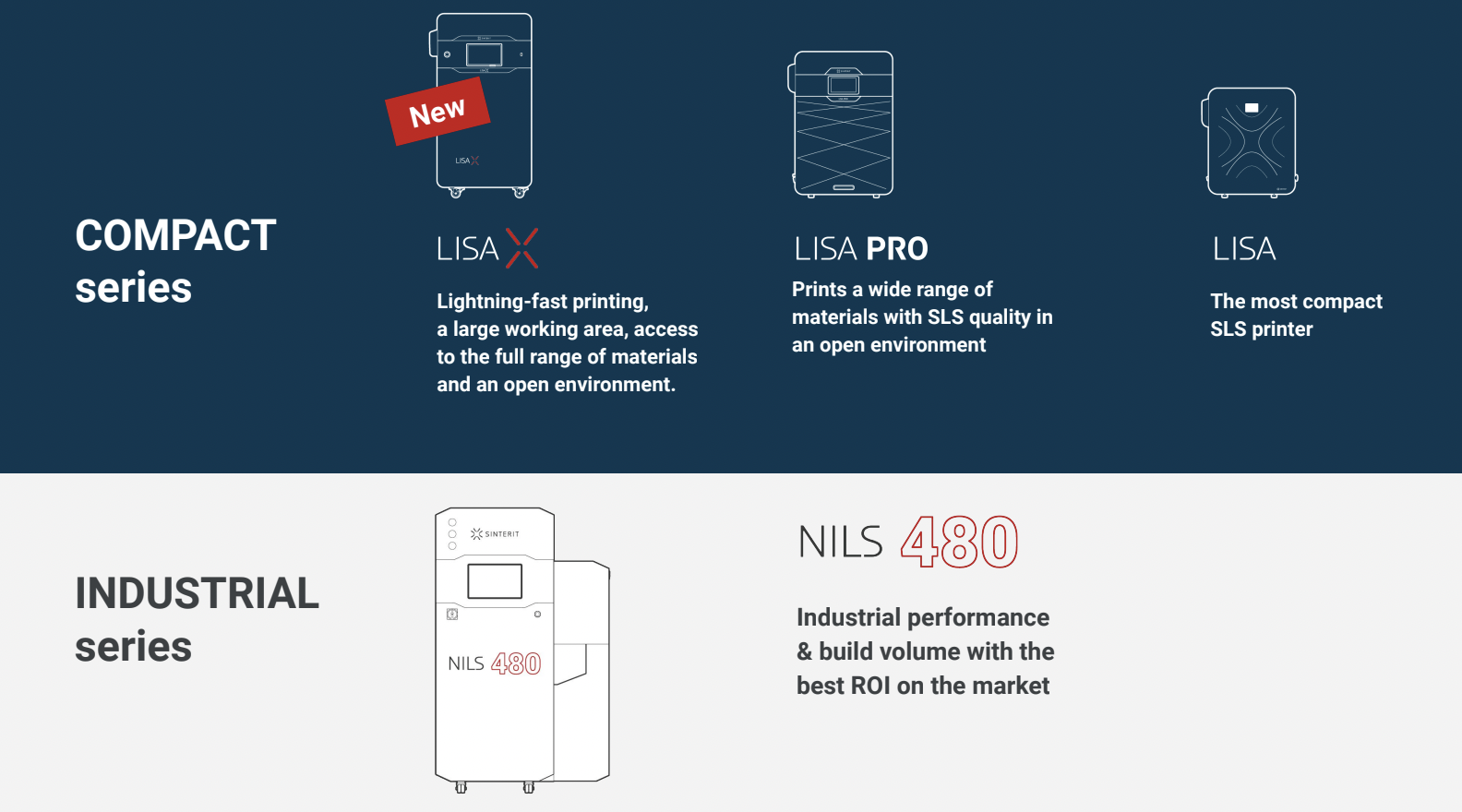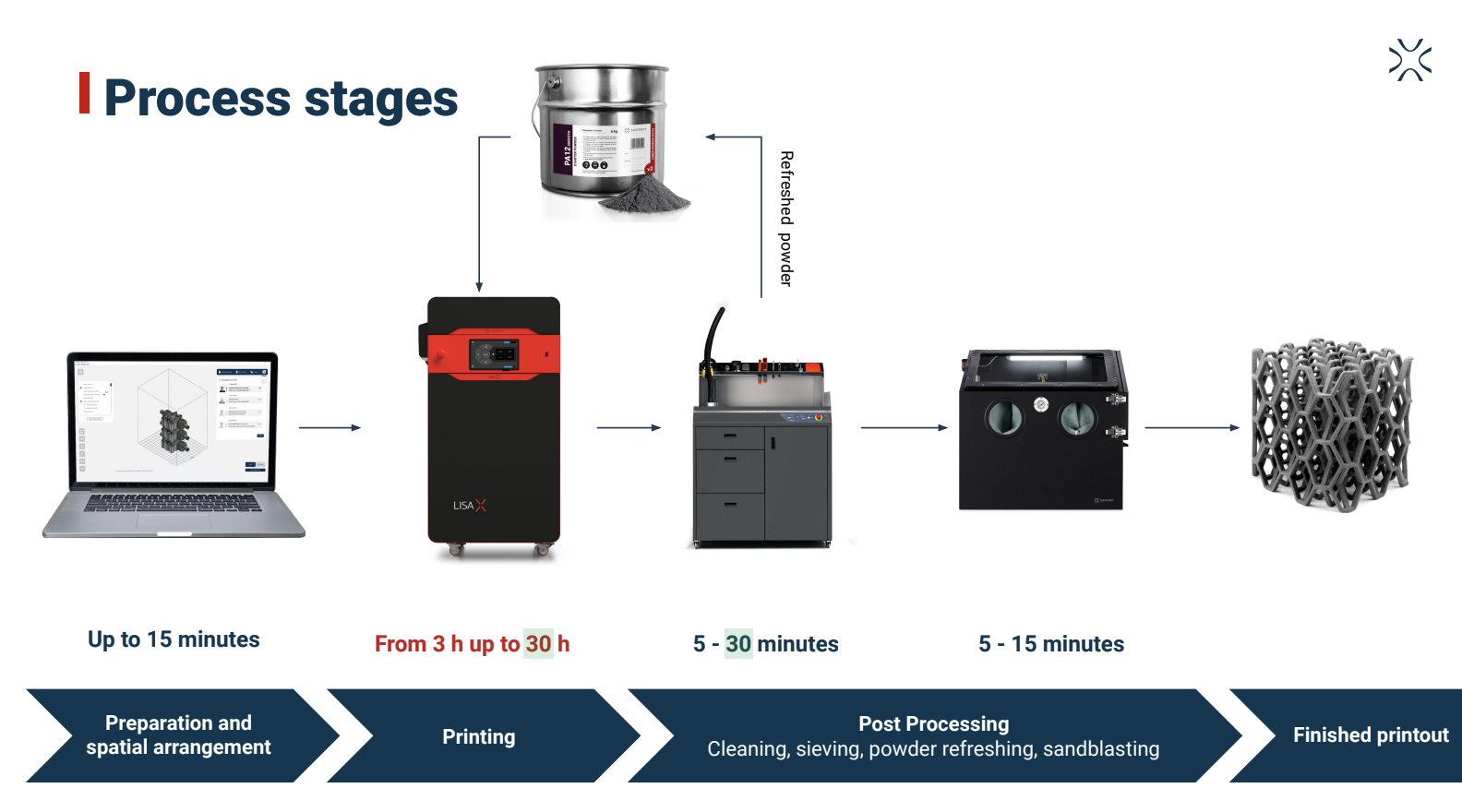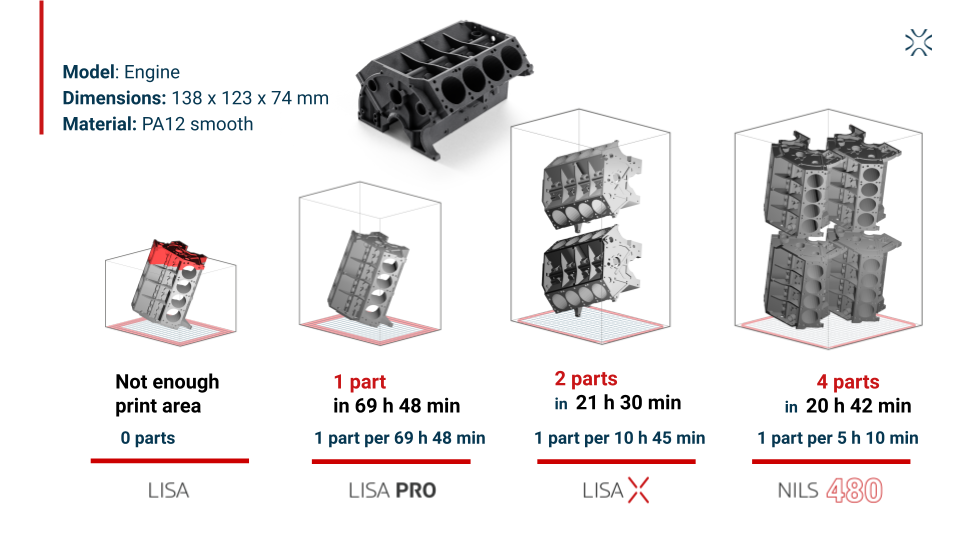Sinterit has released the latest addition to its growing portfolio and is targeting industrial markets that need to speed up product development cycles. The Polish manufacturer of selective laser sintering (SLS) machines plans to roll out its new industrial-grade 3D printer, Lisa X, during the Formnext 2021 event in Frankfurt, Germany, beginning on November 16, 2021.
Throughout the design process, Sinterit focused on creating a solution equipped with a powerful industrial laser and Galvo scanner to run at “revolutionary industrial speeds without sacrificing high-end quality printouts,” explains the company. The result is a machine that makes SLS technology accessible to all professionals in a wide range of industries, including aerospace, automotive, consumer products, education, electronics, military, healthcare, and research. Described as the fastest and biggest compact SLS 3D printer of the brand’s line, Lisa X can manufacture up to 540 elements in 28 hours, accelerating time to market for new products.
Boasting eco-friendly qualities, Lisa X uses less powder and energy due to its compact form and fast printing time. With a usable build area of 130 x 170 x 330 millimeters and a build speed of between 10 and 14 millimeters per hour for PA12 material, the system can create end-use parts and tooling, prototypes, and mid- and high-series productions.
It is reportedly great for advanced research projects and educational institutions, such as long-time Sinterit customers, the University of Greenwich’s Center for Innovation in Process Engineering and Research (CIPER), in the UK. In fact, the center’s director and professor of pharmaceutical technology and process engineering, Dennis Douroumis, says he experiments a lot with printing materials, but with Lisa X, he hopes to spend less time waiting for the 3D printed results and more time working on the actual designs.
After more than five years on the market, Sinterit has launched two major products in only 12 months. Lisa X follows the September debut of NILS 480, the company’s first industrial series printer for huge parts.
Commenting on the new Lisa X, Sinterit’s CEO, Maxime Polesello, believes it will “speed up innovation. We are still focused on delivering the whole SLS 3D printing solution to make additive manufacturing useful and meaningful. With Lisa X, this experience will be even better – faster prints and bigger print volume answers the most common demands of the market.”
Until now, really fast SLS printing was available only in large industrial machines. However, Sinterit’s launch comes as a number of 3D printing companies have announced their own low-cost SLS machines, including Formlabs with its Fuse 1 printer, Russian company Red Rock’s desktop SLS version, and XYZprinting’s MfgPro230 xS technology.
Sinterit hopes to set its new system apart from the competition by publicizing the product as the “fastest compact SLS 3D printer” in the market. A few examples put forth expect to prove that. For example, manufacturers can print as many as 270 sets of electric connectors in 28 hours, which is considered a great improvement over Sinterit’s second-generation Lisa PRO model, which would otherwise take over 490 print hours to make the lot.
Additionally, bigger parts, such as for prototyping, can be done three times faster than with Lisa PRO. Examples of parts printed by Sinterit during the system’s testing phase include a two-part engine model measuring 138 x 123 x 74 millimeters printed in 21 hours and 30 minutes, versus the 140 hours it would take with Lisa PRO. As well as a series of 16 drone components built in 21 hours, that’s eight times faster than with other Sinterit systems.
Companies like UK manufacturer Bulgin, Vermont-based Deep Analytics, and Netsheipas AM in Lithuania are already leveraging Sinterit technologies, but said they were eager to try out the new Lisa X. For example, Deep Analytics senior mechanical engineer Zachary Clements said iterating prototypes with Sinterit’s solutions already helps with the “aggressive timelines” of the hardware prototyping business. Still, the increased printing speed of Lisa X will be even more beneficial to the business.
The “next day prototyping” usability was one of the milestones that compact SLS 3D printer manufacturers needed to achieve to meet the expectations of rapid prototyping technology users. Today, with ten times faster printing time than previous models, Lisa X promises to cater to customers’ demands for agile additive manufacturing, helping accelerate the adoption of the technology and driving interest in SLS for part manufacturing.
To learn more, visit Sinterit at next week’s Formnext event at stand F09 in Hall 12.1.
Subscribe to Our Email Newsletter
Stay up-to-date on all the latest news from the 3D printing industry and receive information and offers from third party vendors.
You May Also Like
3D Printed Heat Spreader Could Improve Efficiency of Electronics
The low-hanging fruit for decarbonization has long been improving the efficiency of existing systems, hence the justification for LED lights and ENERGY STAR certified appliances. While such minor moves are...
3D Printing News Unpeeled: Marine Gearboxes, 3D Printed Motors and $1.7 Million in Seed Funding
UK based Equipmake just released their Ampere-220 e-axle system. The system, which is meant for high performance electric cars, was similar to one released on the Ariel HIPERCAR. It has...
CEAD Unveils 36-Meter-Long 3D Printer for Abu Dhabi’s Al Seer Marine
CEAD, a Dutch original equipment manufacturer dedicated to large-format 3D printers, has unveiled what it claims to be the world’s largest robotic arm-based 3D printer. At 36 meters long and...
3D Printed Biocomposites Could Help Reduce Marine Plastic Pollution
Concerns about the impact of plastic litter and microplastics in the oceans are at the forefront of environmental study. For decades, the marine environment has suffered from the degradation of...







































